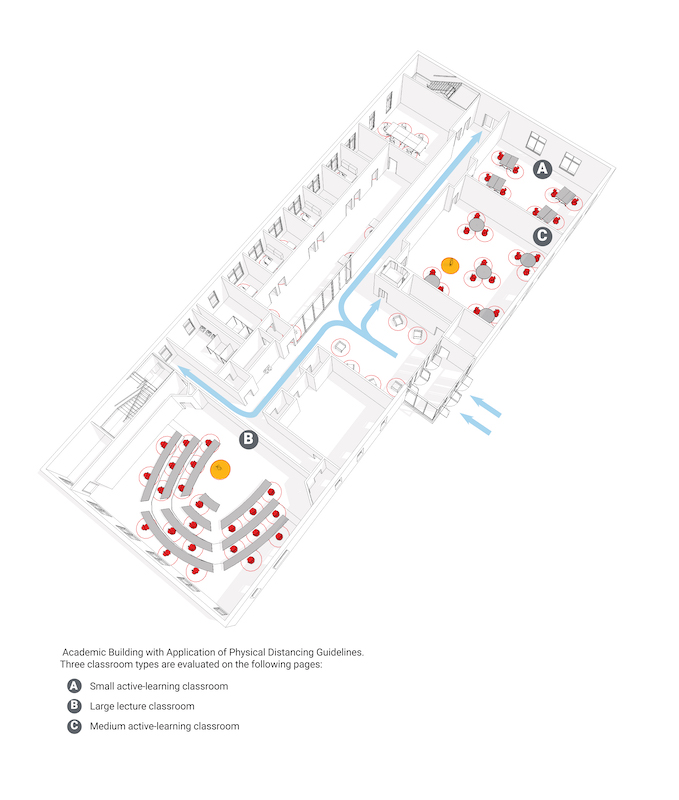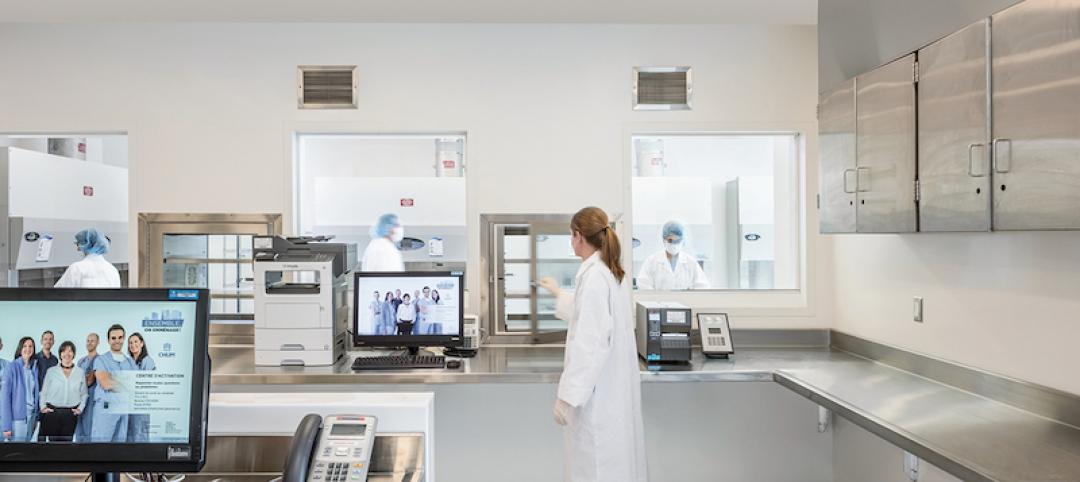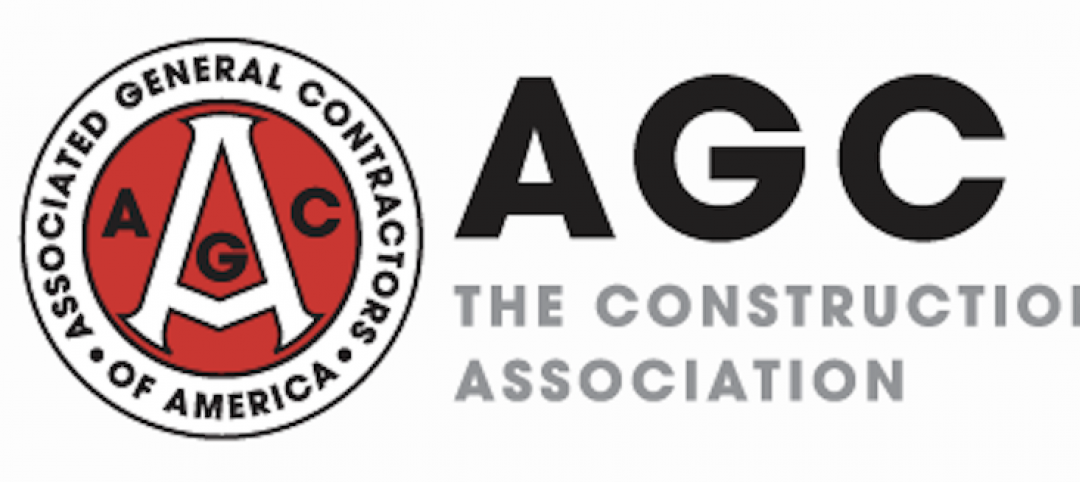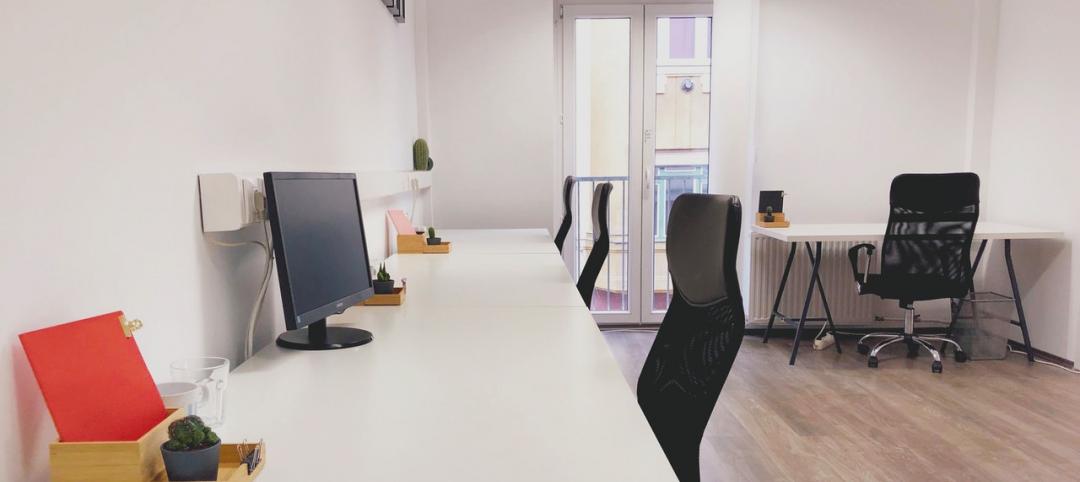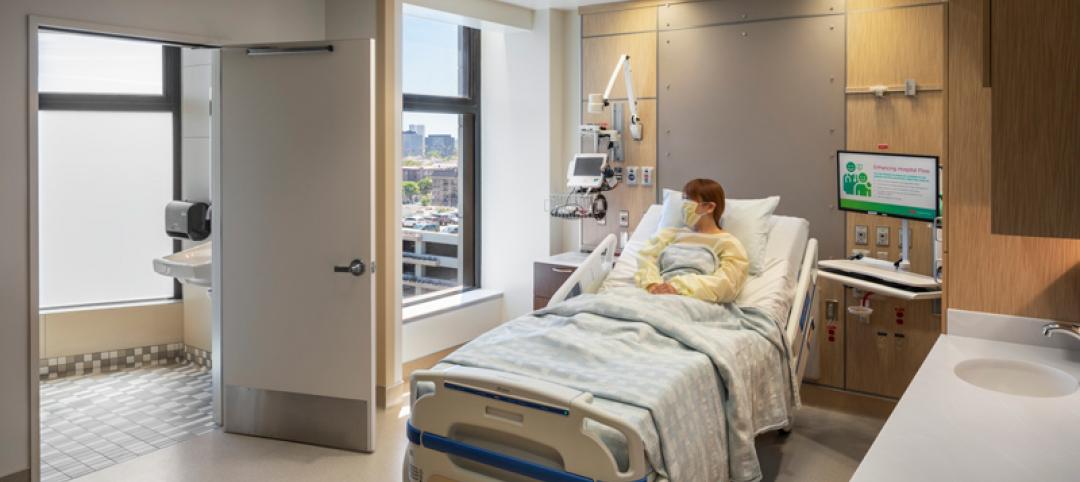As colleges and universities weigh how to reopen their campuses in the fall, the standard government, health, and academic guidelines—wearing masks, reducing densities, and physical distancing—may not be entirely practical for assembling large numbers of students in one place.
To contribute to this discourse, Leo A Daly recently convened planners, architects, and engineers specializing in higher education to study the facility impacts of physical distancing, and to envision solutions.
This group analyzed available guidelines, and then applied design thinking to three key areas. First, it studied infection dynamics on the campus overall and applied the idea of “cohorts” as a mechanism for limiting exposure. Next, the group conducted a detailed study of two campus building types where students congregate: a general purpose academic building and a “traditional” residence hall with shared toilet and shower facilities. These analyses identified “pinch points,” suggesting the need for behavioral and physical modifications to more closely comply with the intent of the guidelines.
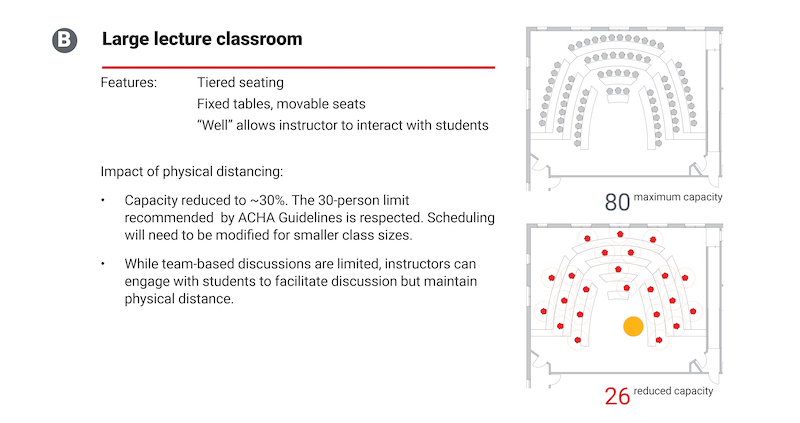 Reducing the number of students in a lecture hall might actually improve instructor engagement.
Reducing the number of students in a lecture hall might actually improve instructor engagement.
A white paper, “Returning to Campus During the Covid-19 Pandemic,” summarizes the group’s findings and recommendations. “The analysis suggests that organizing students into cohorts, and considering rental or toilet and shower facilities, can improve safety where strict compliance of guidelines isn’t feasible,” the report states.
Also see: How to convert college dorms to support the coronavirus crisis
ADDING SAFETY BY DIVIDING STUDENTS INTO SMALL GROUPS
Breaking students into smaller cohorts can help institutions determine roommates and how shared spaces are used. That division can also be extended to academic buildings to create live-learn facilities. The division of students further into micro-communities “would allow students to retain the benefits of social communication while reducing their exposure to pathways of disease common to a large, dense campus,” the white paper’s three authors write.
The paper stresses one-way circulation in academic buildings that would also have a single point of entry, directional signage, and multiple exits. To minimize disease transmission in restrooms, measures might include using alternating stalls and sings, no-touch fixtures and hardware, and frequent cleaning and disinfection. To reduce pinch points, the paper recommends adding toilet capacity by installing temporary trailers with single-use facilities inside trailers adjacent to the building.
The report provides guidelines for small and medium active-learning classrooms, large lecture classrooms (in which it recommends a 30% capacity reduction to a 30-person maximum).
MAKING RESIDENCE HALLS (AND THEIR BATHROOMS) SAFER
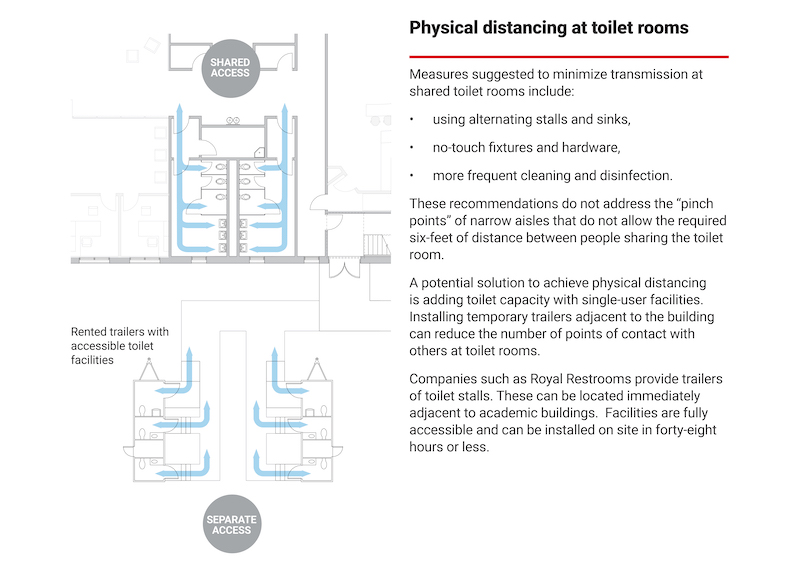 Extending restroom access by installing temporary facilities near academic and residence buildings would minimize disease transmission.
Extending restroom access by installing temporary facilities near academic and residence buildings would minimize disease transmission.
For residence halls, the report thinks that toilets and showers can still be shared, albeit with some changes that include the installation of automatic openings at common doors, assigning student rooms as single occupancy, and converting shower rooms to function as single-occupancy rooms by adding a door and restricting access.
The report suggests that assigning a shower stall to just two living units would reduce the potential for cross contamination among student residents. (Such separations could be achieved by color-coding the stalls.) At shared toilet sites, no-touch or at least reduced-touch fixtures should be standard.
Schools should treat existing shared bathrooms as single use, and reserve them for select students. Other students can be provided bathrooms in the form of temporary facilities adjacent to the resident hall and accessible by a covered hallway. (The report states that a three-unit combined shower, toilet, and lavatory can be rented for $5,500 per month, to start.)
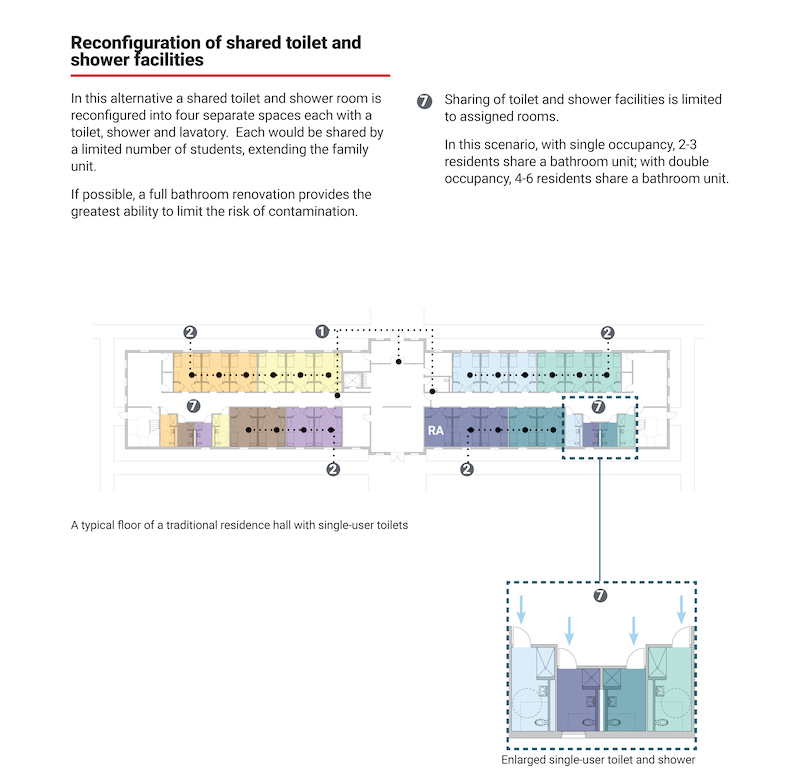
As an alternative, shared toilet and shower rooms can be reconfigured into four separate spaces, each shared by a limited number of students and assigned rooms.
Colleges and universities might also consider building systems that are more focused on occupant health, and incorporating UV-C lighting, which has been shown to kill pathogens.
Related Stories
| Mar 25, 2020
Designing public health laboratories to safeguard researchers during pandemics
As laboratory designers, we want to shed light on a subset of our population critical to protecting us from, and preventing the spread of, severe outbreaks: public health researchers.
Market Data | Mar 23, 2020
Coronavirus will reshape UAE construction
The impact of the virus has been felt in the UAE, where precautionary measures have been implemented to combat the spread of the virus through social distancing.
Coronavirus | Mar 21, 2020
Perkins and Will’s CEO sees a light at the end of COVID-19 tunnel
Phil Harrison says the virus outbreak could make more clients see the connection between design and wellbeing.
Coronavirus | Mar 21, 2020
Construction business and union leaders call on government officials to include construction as an 'essential service' during shutdowns
The chief executive officer of the Associated General Contractors of America, Stephen E. Sandherr, and the President of North America’s Building Trades Unions, Sean McGarvey, issued the following joint statement urging Government Officials to Exempt Construction Work from Regional, State and Local Work Shutdowns.
Coronavirus | Mar 21, 2020
Associated General Contractors launches eight-part webinar series around COVID-19
The programming, which begins Monday, will offer advice on how businesses might need to adjust during the virus.
Coronavirus | Mar 20, 2020
BD+C research: The AEC industry braces for tough sledding in the coming months amid COVID-19 outbreak
A new BD+C poll of U.S. architecture, engineering, and construction firms finds that companies are anticipating project postponements and delays.
Coronavirus | Mar 20, 2020
Pandemic has halted or delayed projects for 28% of contractors
Coronavirus-caused slowdown contrasts with January figures showing a majority of metro areas added construction jobs; Officials note New infrastructure funding and paid family leave fixes are needed.
Coronavirus | Mar 20, 2020
AIA implores Congress to provide relief to business owners and employees
The American Institute of Architects (AIA) 2020 President Jane Frederick, FAIA, and EVP/Chief Executive Officer Robert Ivy, FAIA, are urging Congress to address the critical needs of business owners and employees during the COVID-19 pandemic.
Coronavirus | Mar 20, 2020
Extending care capacity as COVID-19 grows
Coronavirus threatens to overwhelm the U.S. healthcare system. LEO A DALY’s health practice leader offers some innovative ideas for expanding access.
Coronavirus | Mar 19, 2020
Positive vibes: Let's take a look at the brighter side of these crazy times
Perhaps now is a good time to take a page from Monty Python's book and look on the bright side of life. So let's push aside the doom and gloom for a bit and bring a little positivity to these strange times we all currently find ourselves in.


